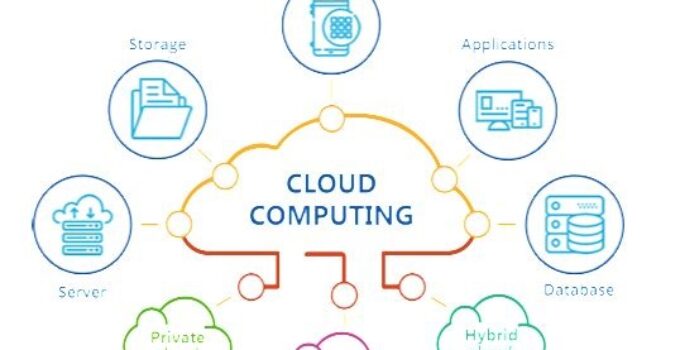Cloud computing is one of the most significant technological advances of our time. It has revolutionized how we live and work and shows no signs of slowing down. As a developer, it’s essential to understand the basics of cloud computing to take advantage of all it offers. You may be getting ready for your next cloud computing project, and unclear how you can go ahead with Cloud migration in banking or other projects you may be handling. Or you may be new to developing and wondering how Cloud can help you. This article will answer some of the most common questions about cloud computing.
What Is Cloud Computing, And How Does It Work?
Cloud computing is a model for enabling convenient, on-demand network access to a shared pool of configurable computing resources (e.g., networks, servers, storage, applications, and services). Cloud servers provide easy access and on-demand network capacity in the form of bandwidth or storage, so you don’t have to deal with installing software yourself anymore!
Cloud computing can be divided into three main categories: Infrastructure as a Service (IaaS), Platform as Services(PaaS), and SoftwareAsServices( SaaS). Iaas provides access to raw compute resources like virtual machines (VMs), storage, and networking. SaaS generally refers to applications delivered over internet-based platforms that could include anything from billing systems or CRM apps.
Benefits Of Using The Cloud For Developers
There are many benefits of using cloud computing for developers. The most obvious benefit is that you don’t have to worry about maintaining your own infrastructure.
Another significant benefit is that you can scale your resources up or down as needed without making a long-term commitment. This means that you only pay for what you use, which can save you money in the long run.
Finally, cloud computing can make it easier to collaborate with others, as you can share files and applications over the internet.
How To Get Started With Cloud Computing
If you’re a developer, there’s a good chance you’re already using cloud computing somehow. For example, if you use GitHub to store your code repositories, you use cloud storage. If you use Heroku to deploy your applications, then you’re using Platform as a Service (PaaS).
However, if you’re not already using the cloud, there are a few things you need to do to get started.
- First, you need to decide which type of cloud computing is right for your needs. Do you need Infrastructure as a Service (IaaS), Platform as a Service (PaaS), or Software as a Service (SaaS)?
- Once you’ve decided which type of cloud computing you need, you need to choose a provider. There are many different providers out there, so it’s essential to do your research and choose one that’s right for you.
- Finally, once you’ve chosen a provider, you need to set up your account and use the cloud.
Tips For Optimizing Your Workflow In The Cloud
You can do a few things to optimize your workflow in the cloud.
- First, make sure you understand the pricing model of your chosen provider. This will help you avoid unexpected charges.
- Second, take advantage of automation tools to manage your resources. This can save you a lot of time and effort in the long run.
- Third, use monitoring tools to keep an eye on your resource usage. This will help you identify any areas where you can optimize your workflow.
- Fourth, make sure you have a good backup strategy in place. This will protect your data in case of any unforeseen problems.
- Finally, don’t be afraid to ask for help from your provider if you encounter any problems.
Common Problems And Solutions When Working With The Cloud
- Data loss is one of the most common problems when working with the cloud. This can happen for various reasons, such as accidentally deleting files or losing access to your account. The best way to avoid this problem is to have a good backup strategy in place. This way, if you do lose data, you can restore it from your backups.
- Another common problem is security issues. Because you are storing your data on someone else’s servers, ensuring that your provider has strong security measures is essential. The best way to avoid this problem is to do your research and choose a reputable provider. Another way to mitigate this risk is to encrypt your data.
- Finally, another common problem people run into is billing issues. This can happen if you accidentally go over your allotted storage or bandwidth or if you are charged for a service you didn’t use. You can avoid this problem by understanding your provider’s pricing model and keeping an eye on your usage. If you do run into problems, contact your provider and ask for help.



